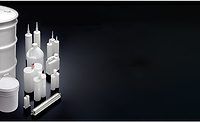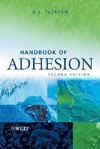Thinking Outside of the Box When Choosing the Right Packaging
The role of packaging has evolved for some time and now must include brand awareness, values, and sustainability.

In years past, if you wanted to protect, ship, and sell your product, you put it in a can, bottle, or box. Today, packaging comes in all different forms, types, shapes, and sizes. While the options are not necessarily endless, packaging design is limited only by imagination and requirements.
According to Allied Market Research, the global packaging market is expected to reach over $1 trillion by 2023.1 Most end-use applications are divided into broad categories, such as food, beverage, healthcare, cosmetics, industrial, and other consumer goods. Within those larger segments are sub-segments. For instance, the beverage category includes bottled water, carbonated soft drinks (CSDs), coffee, beer/cider, milk, tea, fruit beverages, sports drinks, wine, energy drinks, value-added water, and spirits. These sub-segments have many packaging options to consider.
Historically, to select packaging for your product, you would review your package requirements and choose a package type. If you were packaging a salad mix, for example, you might choose a clam shell or a bag. Now, instead of simply considering what product is being packaged, three questions to ask include:
- “What should we use to package our product to ensure that it is kept protected and safe?”
- “How does that affect our brand’s needs?”
- “What does this packaging say about our sustainability initiatives?”
The role of packaging has evolved for some time and now must include brand awareness, values, and sustainability. These attributes are meaningless unless the end-use applications are considered.
When looking at end-use packaging, mega trends to consider include: increase in urbanization, growing population in youth and the elderly, increase in the use of home and personal care products, growing interest in sustainable solutions, and expansion of e-commerce (online shopping).
These trends are everywhere—not just in packaging. It’s important to understand how these trends intersect with packaging needs. Let’s discuss the three key packaging requirements (containment, protection/safety, and identification/brand awareness), along with sustainability and value signaling, including the impact these have on end-use application packaging.
Containment
Primary and secondary packaging should contain or enclose a product for handling and distribution. Primary packaging involves packaging that is in direct contact with an end-use product. It is sometimes referred to as consumer or retail packaging.
Secondary packaging’s function is logistical and for the display of single units. Secondary packaging also can be referred to as display packaging and can be used to quickly restock. Display packaging can include countertop display units (CDUs), retail-ready packaging (RRP), or shelf-ready packaging (SRP). An example of primary packaging would be a can and label for a can of soup, with the secondary packaging being the shrink wrap and tray around a case of soup.
Protection and Safety
Food end-use applications, specifically produce, bring concerns regarding safety and quality in the supply chain. Primary packaging should provide tamper-free security, maximize shelf life, and prevent contamination, whereas secondary packaging should provide protection from damage during transportation. For example, a produce container would need to stop infestations, maintain an advantageous mix of oxygen and carbon dioxide, and slow decay or over-ripening.
Brand Identification and Awareness
Over 1.14 million brands struggle to get the attention of consumers.2 Packaging now plays a key role in transmitting a brand’s ideals and beliefs, as well as act as another marketing channel. Packaging identification is crucial in both primary and secondary packaging.
Delivering clear information to retailers and consumers used to be as straightforward as labeling with type, country of origin, and volume or size. Modern packaging design is also used to help market or differentiate the end-use product and provide a way for the items to stand out. Point-of-sale (POS) packaging can be very glossy and costly and will often include full-color graphics and images.
Sustainability
Encouraged by reports from the Ellen MacArthur Foundation,3 consumers are pushing demand for sustainable packaging. Sustainable packaging is taking many forms for end-use applications. This includes familiar terms, such as reduction in packaging, reusability, and recycling, as well as less familiar terms like compostability, biodegradability, and post-consumer resin (PCR).
Sustainability initiatives for packaging are not the same in every region. For example, Europe imposed a plastic tax on non-recycled plastic with a goal to change consumer and manufacturer behavior and reduce the amount of plastic packaging in the environment.4
The interest in sustainable packaging has increased as consumer preferences shift toward recyclable and eco-friendly packaging materials. Downsizing of packaging and breakthroughs in new technology are also pushing the sustainable packaging market globally.
The continued high cost of recycling and poor infrastructure available for recycling processes are likely to hamper the growth of this market, regardless of the packaging type or product end use. In order to truly be sustainable, a supply chain analysis must be completed. That means looking at sourcing, packaging production, transportation, point-of-sale, consumer consumption, and then recycling and reprocessing.
Tradeoffs
Flexible plastic packaging is cost effective, has increased shelf life of the end-use product, allows for packaging downsizing, lowers shipping costs, and decreases the product-to-packaging ratio. The downsides of flexible plastic packaging include the lack of recycling or composting infrastructure and the high usage of virgin plastic in the packaging formation.
Corrugated boxes will remain the leading secondary produce packaging because of their low cost and light weight. In addition, corrugated provides a cushioning effect for protection, high stacking strength, graphic marketing capabilities, and recyclability advantages. However, corrugated needs to be produced regionally for cost effectiveness and may run into issues with how pulp is sourced and managed.
Reusable plastic containers (RPCs) have started to gain market share in categories such as fresh produce shipping and display as a result of extensive usage by large retailers. These are expensive to produce, maintain, and track.
Packaging Variety
With thousands of different sizes and styles of packaging available, opportunities abound for creating standardized packaging that meets the needs of the entire supply chain—from converters and consumer packaged goods (CPG) brands to consumers. The variety of package sizes and material combinations is a result of the market responding to unofficial, yet demanding, standards from many different end-use segments.
Converters want larger standardized packages to minimize downtime and changeovers. CPGs tend to prefer smaller, individual packages with high-quality graphics to entice consumers. Logistic companies favor standard sizes for better palletizing and handling.
Plastic and Paper
In food packaging, the barrier properties of plastic are important for keeping food fresh longer while also maintaining a small carbon footprint relative to the production of the food.
Moving toward mono-materials that make plastics recyclable at the end of their life helps to improve the sustainability profile of plastic packaging solutions.
Paper offers many advantages. It is a renewable material, and it is easy to recycle. In fact, paper is currently one of the most recycled packaging materials in the world.
Fit for Purpose
In reviewing the updated requirements for packaging, it’s important to consider fit for purpose. For those unfamiliar with the idea, this phrase refers to whether the packaging is “good enough to do the job it was designed to do.” For a bag of chips, this might mean having a package that will survive packaging, transportation, purchase, consumption, and disposal.
If the shelf life is six months, then fit for purpose would mean a package that lasts for six to eight months, but not years. Packaging ideally should be designed with end-of-life in mind, meaning that it can be recycled, reused, composted, or disposed of properly.
Identifying the Right Package
A lot of information compares one type of package to another. Without a consideration of what the end-use needs are, however, it’s difficult to say that one material is superior to another. Creativity and clear identification of package requirements will lead you to the right packaging for your product. Whether that is inside or outside of a box is up to you.
For more information, contact the author at (360) 606-7093 or justine.hanlon@hbfuller.com, or visit www.hbfuller.com.
References
- “Packaging and Protective Packaging Market,” Allied Market Research, May 2017, www.alliedmarketresearch.com.
- “Megatrends are Packaging Trends,” Karl Knauer, www.karlknauer.com/about-us/news/archiv/detailview/article/megatrends-sind-packaging-trends.
- “New Plastics Economy,” Ellen MacArthur Foundation, www.ellenmacarthurfoundation.org/our-work/activities/new-plastics-economy.
- “EU Approves Tax on Nonrecycled Plastic,” Recycling Today, www.recyclingtoday.com.
Looking for a reprint of this article?
From high-res PDFs to custom plaques, order your copy today!








